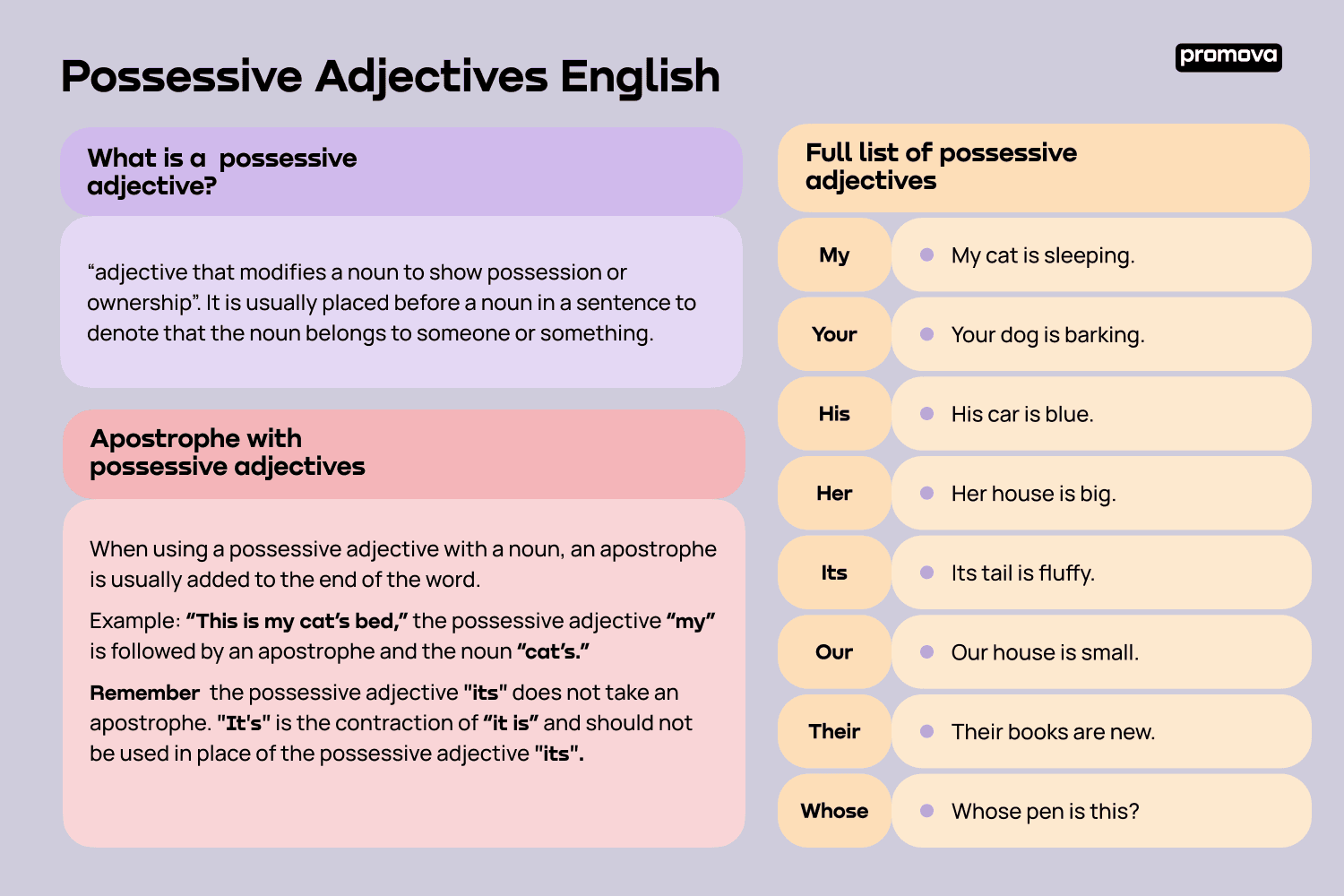Possessive Adjectives English
Contents
Possessive adjectives are little words that play a very important role in the English language, as they allow us to indicate who something belongs to. In this article, we will explain what possessive adjectives are, how to use them correctly, and give you practical examples so you can easily master them.
Let's find out how to talk about what's yours, mine, or ours in English!
What is a Possessive Adjective in English?
A possessive adjective is a word that modifies a noun to indicate possession or ownership. It is usually placed before the noun in a sentence to indicate that the noun belongs to someone or something.
Full List of Possessive Adjectives
Here is a full list of possessive adjectives in English:
- My
- Your
- His
- Her
- Its
- Our
- Their
- Whose
Examples of Possessive Adjectives in English Sentences
Here are some examples of possessive adjectives in sentences:
- My grandpa is sleeping.
- Your dog is barking.
- Her car is blue.
- Our house is big.
- Its tail is fluffy.
- Their books are new.
- Whose pen is this?
3
Apostrophe with possessive adjectives
When using a possessive adjective, you never add an apostrophe to it. If you need an apostrophe to indicate ownership, you add it to the noun.
For example: In the sentence "This is my cat’s bed," the possessive adjective "my" modifies "cat" to indicate that the cat is my property, and an apostrophe is added to the noun "cat" to indicate that the cat in turn owns the bed.
10 examples of possessive adjectives with apostrophes in nouns:
- His – His car’s engine.
- Her – Her dog’s leash.
- Our – Our house’s roof.
- Your – Your dad’s boat.
- Their – Their baby’s crib.
- My – My friend’s book.
- Your (plural) – Your team’s victory.
- Our – Our school’s library.
- Her – Her brother’s backpack.
- Their – Their teacher’s desk.
The special case of "its"
It is essential to remember that the possessive adjective "its" never has an apostrophe. A very common mistake is to confuse it with the contraction it+is = it’s, however, these are not words that can be used interchangeably, as they can make the sentence lose its meaning. Example:
- Incorrect: "It’s tail is long" ([It is] tail is long, which is nonsensical)
- Correct: "Its tail is long" ([The animal’s] tail is long)
Difference between possessive adjectives and possessive pronouns
While it is common to confuse possessive adjectives with possessive pronouns in English, and while both serve to indicate belonging, it is also important to realize the difference between them:
Possessive adjectives always accompany a noun to indicate the relationship between the noun and the speaker/writer.
- Example: “These are my glasses.”
On the other hand, possessive pronouns replace the noun when we already know what we are talking about.
- Example: “These are mine.”

Summary
Possessive adjectives are words used to show ownership or possession. They are usually placed before a noun in a sentence to indicate that something belongs to someone or something. They can also show a relationship between two people, or be used with gerunds to indicate possession:
If you want to learn more about English grammar, feel free to check out the helpful references below!



Comments